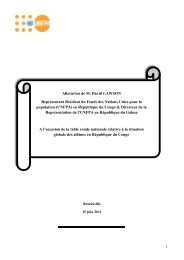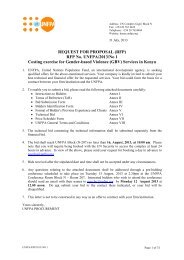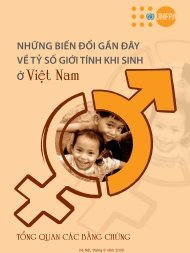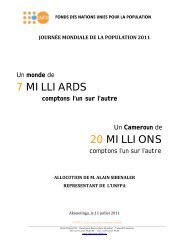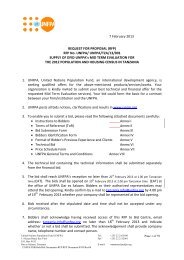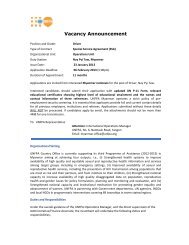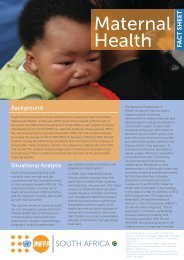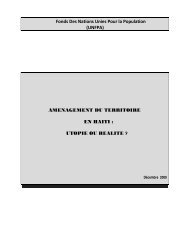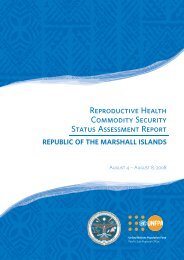MYANMAR
MYANMAR
MYANMAR
You also want an ePaper? Increase the reach of your titles
YUMPU automatically turns print PDFs into web optimized ePapers that Google loves.
26<br />
D. Financial Aspects<br />
78. Myanmar birth spacing programmes are currently financed by the government, UN<br />
agencies (UNFPA), NGOs and the community. The Government allotted manpower,<br />
transportation, equipment and buildings in the townships where the birth spacing<br />
programmes are operated. The UN agencies such as UNFPA and international NGOs such as<br />
Family Planning International Assistance, World Vision International provide funding for<br />
training, doing surveys and contraceptive supply. National NGOs and communities provide<br />
training facilities, building, transportation and other assistance for operation of the<br />
programmes.<br />
79. Contraceptive supply is the essential and key factor for running the birth spacing<br />
programmes effectively. UNFPA and international NGOs can provide contraceptive supplies<br />
to a certain period only. Therefore, at the present time, mechanisms have to be developed to<br />
acquire regular supply of contraceptives for sustainability of the programme. There has been<br />
continuous supply of contraceptives from the existing commercial outlets throughout the<br />
whole country. Thus everybody can buy and use contraceptives from those small shops. To<br />
promote utilization of contraceptives by married women of reproductive age and maintain<br />
regular supply, community cost sharing schemes are tried in some townships. The national<br />
NGOs such as MMCWA have a lot of potential to accomplish these schemes. Other<br />
mechanism which can be used is sale of contraceptives with reduced market price from<br />
cooperatives or regular commercial outlets.<br />
80. Major financial sources for other population programmes, such as population<br />
information programmes etc., are similar to the birth spacing programme. The government<br />
and communities provide major portion of funds and the UN agencies (WHO, UNICEF,<br />
UNDP, UNFPA), NGOs and private sector assist in training, providing supplies and<br />
equipment and technology development. More technical cooperation and mobilization of<br />
funds among developing countries or between developed and developing countries will be<br />
done in the future. Private sector involvement in population programmes are also being<br />
encouraged.<br />
E. The Role and Relevance of the World Population Plan of Action (WPPA) and other<br />
Instruments<br />
81. The World Population Plan of Action (1974), the Mexico recommendations (1984),<br />
the Amsterdam Declaration and the International Development Strategy for the Fourth<br />
United Nations Development Decade are very much relevant and provide the broad policy<br />
framcwork for undertaking population policies and programmes for the country. Although




